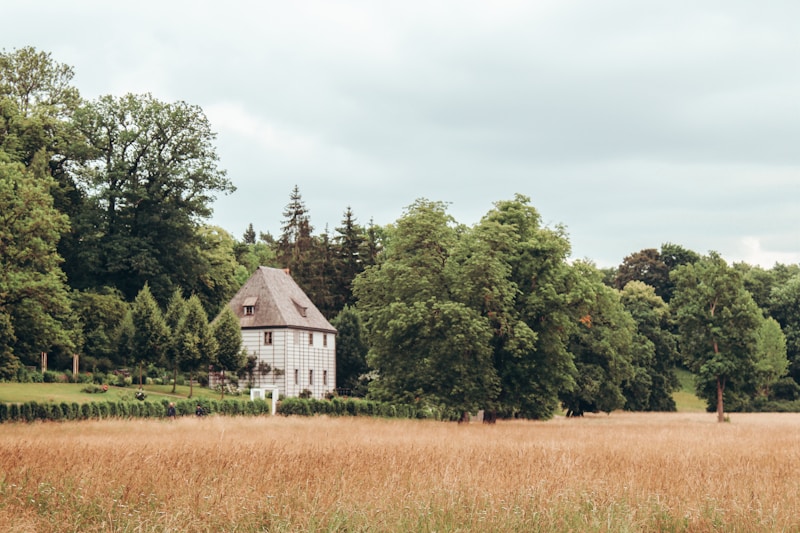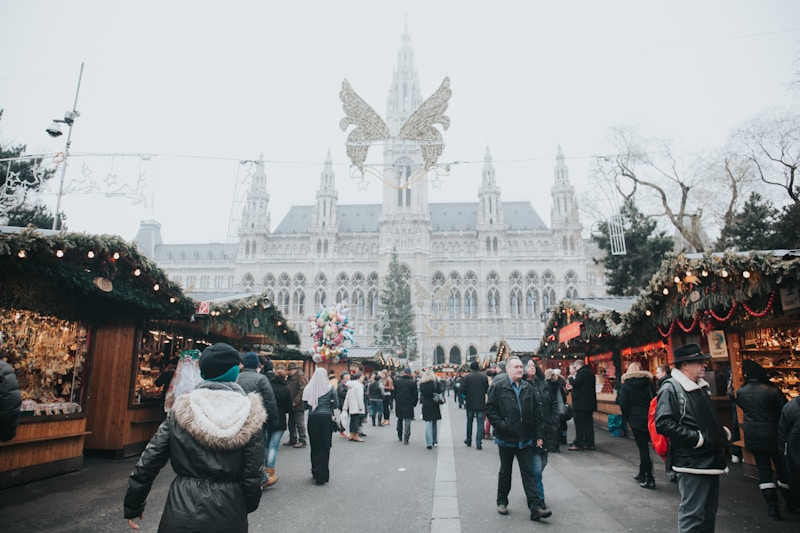9 Questions
What was the result of the Thirty Years' War?
Who established a totalitarian regime in Germany in 1933?
What was the goal of the Teutonic Knights during the Prussian Crusade?
Who invented the printing press in the 15th century?
What was the result of the Investiture Controversy in the 11th century?
What was the outcome of the Heilbronn reform plan of 1525?
Who led the unification of Germany in 1871?
What was the main goal of the Catholic Counter-Reformation initiated in 1545?
Who was the pioneering mind of empirical and rational research in Germany?
Summary
A Brief History of Germany
-
Germany was first referred to as Germania by Julius Caesar in reference to the unconquered area east of the Rhine, which distinguished it from Gaul.
-
The Franks conquered the other West Germanic tribes and when the Frankish Empire was divided among Charles the Great's heirs in 843, the eastern part became East Francia.
-
Germany experienced tremendous destruction in the Thirty Years' War, a civil war from 1618 to 1648, and the estates of the empire attained great autonomy in the Peace of Westphalia.
-
The German Confederation was established under Austrian presidency after the Holy Roman Empire was dissolved in 1806.
-
The unification of Germany was achieved under the leadership of Chancellor Otto von Bismarck with the formation of the German Empire in 1871.
-
Germany led the Central Powers in World War I, but was defeated, partly occupied, forced to pay war reparations, and stripped of its colonies and significant territory along its borders.
-
Adolf Hitler, leader of the Nazi Party, established a totalitarian regime in January 1933 and made racism, especially antisemitism, a central tenet of its policies.
-
The Holocaust, a systematic genocide program, killed 17 million people, including 6 million Jews, during World War II.
-
After the war, Germany spent the entirety of the Cold War era divided into the NATO-aligned West Germany and Warsaw Pact-aligned East Germany.
-
The Berlin Wall was opened in 1989, the Eastern Bloc collapsed, and East and West Germany were reunited in 1990.
-
Germany is one of the founding countries of the eurozone and remains one of the economic powerhouses of Europe, contributing about 1/4 of the eurozone's annual gross domestic product.
-
Prehistoric early modern human occupation uncovered and documented in several caves in the Swabian Jura include various mammoth ivory sculptures that rank among the oldest uncontested works of art and several flutes, made of bird bone and mammoth ivory that are confirmed to be the oldest musical instruments ever found.The Holy Roman Empire: A Summary
-
The Stammesherzogtümer (stem duchies) in Germany refer to the traditional territory of the various Germanic tribes.
-
The Salian emperors retained the stem duchies as the major divisions of Germany, but they became increasingly obsolete during the early high-medieval period under the Hohenstaufen.
-
Successive kings of Germany founded a series of border counties or marches in the east and the north.
-
The Merovingian kings conquered the Thuringii, the Kingdom of the Burgundians and the principality of Metz and defeated the Danes, the Saxons and the Visigoths.
-
By 500, Clovis had united all the Frankish tribes, ruled all of Gaul and was proclaimed King of the Franks between 509 and 511.
-
Charlemagne ended 200 years of Royal Lombard rule with the Siege of Pavia, and in 774 he installed himself as King of the Lombards.
-
Otto I was crowned German king at Aachen, in 961 King of Italy in Pavia and crowned emperor by Pope John XII in Rome in 962.
-
During the reign of Conrad II's son, Henry III, the empire supported the Cluniac reforms of the Church, the Peace of God, prohibition of simony, and required celibacy of priests.
-
The Hanseatic League was a commercial and defensive alliance of the merchant guilds of towns and cities in northern and central Europe that dominated marine trade in the Baltic Sea, the North Sea and along the connected navigable rivers during the Late Middle Ages.
-
The Ostsiedlung is the term for a process of largely uncoordinated immigration and chartering of settlement structures by ethnic Germans into territories, already inhabited by Slavs and Balts east of the Saale and Elbe rivers.
-
In 1230, the Catholic monastic order of the Teutonic Knights launched the Prussian Crusade.
-
The order, emboldened by imperial approval, quickly resolved to establish an independent state, without the consent of duke Konrad.Medieval and Early Modern Germany: Key Points
-
Germany was a collection of independent states and territories ruled by feudal lords and monasteries.
-
The Investiture Controversy in the 11th century saw a struggle between the Church and the Emperor over control of the Church and secular authorities.
-
The Lombard League defeated Emperor Barbarossa in 1176, leading to a reconciliation between the Pope and the Emperor in 1177.
-
The 1183 Peace of Constance granted local jurisdiction and full regal rights to Italian cities loyal to the empire.
-
The Duchy of Bavaria was returned to the House of Welf, and the Margraviate of Austria was separated from Bavaria and turned into the independent Duchy of Austria in 1156.
-
Johannes Gutenberg of Mainz invented the printing press in the 15th century, which helped spread the ideas of the Protestant Reformation.
-
The Habsburg dynasty acquired control of the southeastern empire and permanently occupied the position of the Holy Roman Emperor from 1438 to 1806.
-
The Landsknechte, created by Maximilian I, broke the back of the knight class and spread all over Europe shortly after his death.
-
A Permanent Land Piece was declared in 1495 with regional leagues and unions providing the supporting structure, together with the creation of the Reichskreise.
-
Social discontent among knights and peasants led to predatory "robber knights" becoming common.
-
The Protestant Reformation began in 1517 with Martin Luther's publication of his 95 Theses, which challenged the Catholic Church's corrupt practices and misconduct.
-
The Heilbronn reform plan of 1525 referred to the Reich as "of German nation," and the term "German nation" had witnessed a rise in use due to the growth of a "community of interests."Germany: A Historical Overview
-
Martin Luther's translation of the Bible into German had a significant impact on the establishment of modern German language.
-
The German Peasants' War was a series of economic and religious revolts of the rural lower classes, which resulted in the defeat of the insurgents by territorial princes.
-
The Catholic Counter-Reformation was initiated in 1545 at the Council of Trent to challenge and contain the Protestant Reformation.
-
The Thirty Years' War (1618-1648) was one of the most catastrophic wars in history, resulting in a significant decline in population due to various reasons such as pandemic murder, crop failures, and famine.
-
The Protestant Reformation was a triumph for literacy and the new printing press, which led to an increase in literacy and promoted the development of non-local forms of language.
-
Johannes Kepler was one of the pioneering minds of empirical and rational research, and his ideas influenced contemporary scientists like Galileo Galilei and Isaac Newton.
-
German Colonies in the Americas existed because the Free Imperial Cities of Augsburg and Nuremberg got colonial rights in the Province of Venezuela or North of South America.
-
The total population of Germany grew from 16 million in 1700 to 24 million in 1800, and the 18th-century economy profited from the widespread practical application of the Scientific method.
-
Louis XIV of France waged a series of successful wars in order to extend the French territory, and the Grand Alliance of 1689 took up arms against France and countered any further military advances of Louis.
-
The Treaty of Ryswick provided for the return of the Lorraine and Luxembourg to the empire and the abandoning of French claims to the Palatinate.
-
Frederick II "the Great" was an artist, author, and philosopher who conceived and promoted the concept of enlightened absolutism.
-
The concept of enlightened absolutism was implemented in Prussia and Austria since 1763, despite being rejected by the nobility and citizenry.
Description
Test your knowledge of German history with this informative quiz! From the early Germanic tribes to the unification of Germany under Bismarck, and from the Holy Roman Empire to the devastation of World War II, this quiz covers key points and events throughout Germany's rich history. Challenge yourself with questions on important figures, wars, and significant moments that have shaped this influential country. Whether you're a history buff or just looking to learn something new, this quiz will provide an enjoyable and educational experience.



